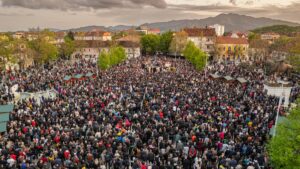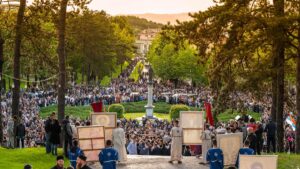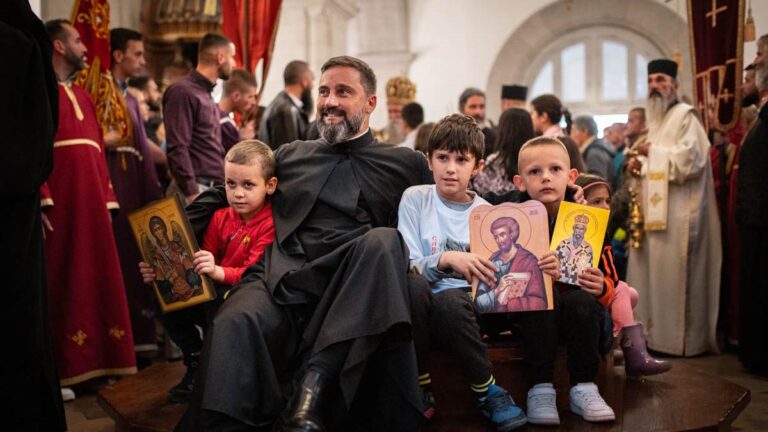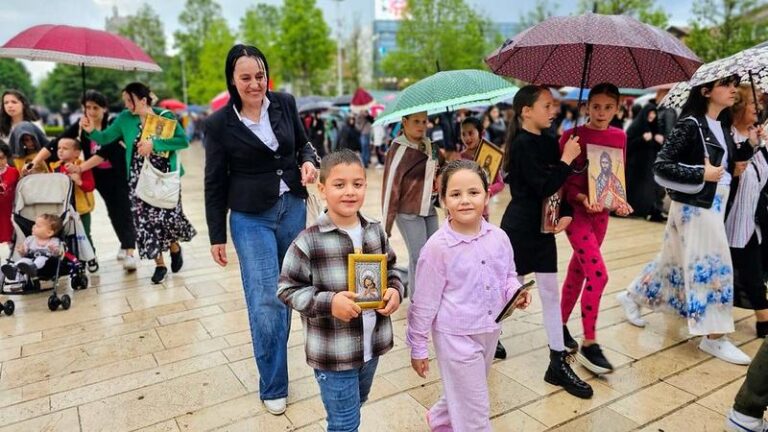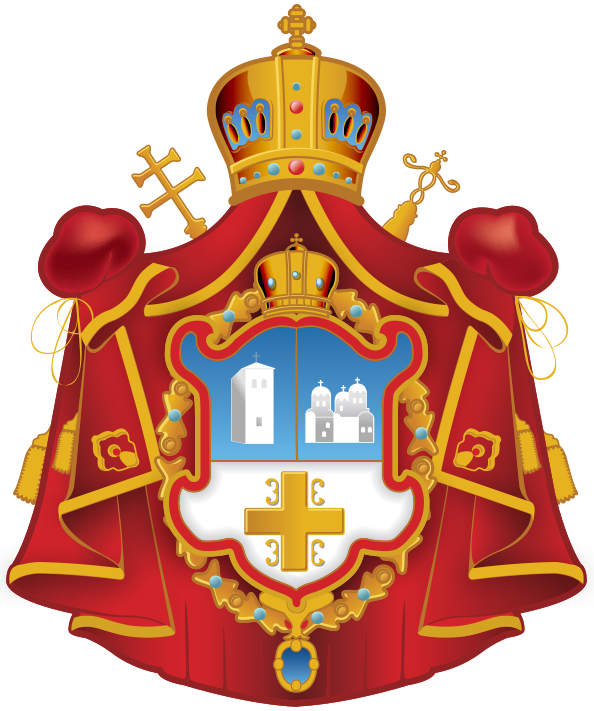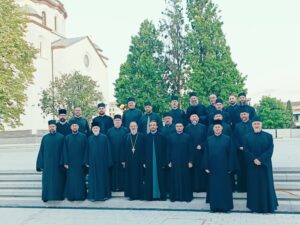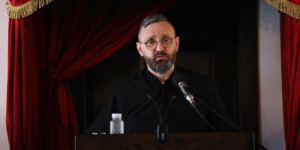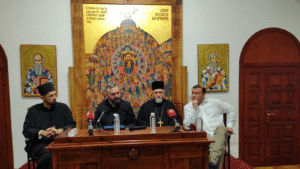These words from the Akathist to Saint Basil of Ostrog most fittingly convey the mystery of the wondrous sacred procession that has, for three full decades, graced the streets of the City at the foot of the Trebjesa hill on the feast day of Saint Basil of Ostrog. Truly, it is not easy to speak of the Nikšić Litija, for it is a miraculous work of God’s mercy and an ineffable manifestation of the love of Saint Basil, who as spiritual father and archpastor, leads the procession.
Before attempting to offer even a few modest reflections on this sacred event, we must first answer a fundamental question: What is a litija, and what is its significance?
The term litija derives from the Greek word lité (earnest supplication) and originally denoted a prayer made outside the temple. In the fifth century, the word began to acquire a more specific liturgical connotation, signifying prayer within a solemn procession, and by the tenth century, it became a technical term for such religious processions. Litije are solemn and communal acts of supplication and have always been an integral part of the liturgical life of the Church. Historically central to the spiritual life of great Christian cities such as Constantinople and Rome, these processions extended across all regions, and even today, nearly every town observes them on special feast days.
The litija is not merely a prayerful appeal, but an occasion for the bestowal of sanctifying grace and blessing upon the inhabitants of an entire city.
Do We Steadfastly Walk the Path of Saint Basil of Ostrog?
By participating in a litija, we bear witness to our faith, affirming that through prayer both time and space are sanctified. In this sacred procession, mind, heart, body, and every motion become instruments of prayer. In this way, everything is blessed, renewed, and healed: our lives, the feet of those who walk, the eyes of those who behold, the voices of the chanters and the ears of the listeners, our hands as we lead our children, and the hearts of those children in whom we awaken joy and reverence toward the unseen Leader of the procession—our Lord Jesus Christ.
From the hagiography of Saint Basil the Wonderworker of Ostrog, we learn that his holy relics were only removed from his monastery in times of great peril. During the turmoil of the 1990s, in 1996 to be exact, amidst war and hatred, Saint Basil, as a true archpastor, came forth to visit his native Herzegovina and his city of Onogošt (Nikšić). The fruits of that sacred visitation remain abundant. The entire created order rejoiced at his arrival: the birds sang praises to God and His saint; animals accompanied the holy procession joyfully. The great wonderworker had returned to bless his homeland, to heal its wounds, to proclaim peace, to restore broken bonds, and to plant the Gospel message in hearts yearning for Christ.
Before the Reliquary of the Mother of Saint Basil of Ostrog
The most visible fruits of this sacred act remain in Nikšić, a city founded on the faith, hope, and love of Saint Basil. That first procession, begun twenty-nine years ago, has never ceased—it flows like a river upstream, toward the joy of the Kingdom of Heaven. Each year on Saint Basil’s feast day, Nikšić becomes the centre of the universe, a time when the temporal is transfigured into the eternal, and love becomes the common language of all participants. The litija is the most radiant image of Onogošt.
The citizens of Nikšić—and all who consider it their own—mark time from one litija to the next. It is a sacred walk of love and blessing. In the litija, enemies are reconciled, the sorrowful are comforted, and lifelong friendships are forged. The Saint Basil procession is a glimpse of heaven on earth, evidenced by the prayerful tears on the faces of those who walk. Even the youngest children participate, gaining the highest education in the Lord.
At the head of the procession stands Saint Basil himself, reminding us that Christ is the Way, the Truth, and the Life. Every participant becomes a sharer in that divine path, His perfect truth, and His eternal life. It is profoundly moving to see men and women, children and elders, walking joyfully even in the rain—an image that captures the very beauty of our faith.
Years ago, when I first participated in the Saint Basil procession, a wise man told me, “Brother, you’ve entered a prayerful river from which no one ever leaves.” Now, years later, I see that he passed on to me not merely human wisdom, but a deeply personal experience.
The Nikšić Litija is a steadfast vessel guided by Saint Basil of Ostrog. It sails the sea of God’s love, free from the fear of storms or shipwreck. At its conclusion, we are left only to give thanks to God and His servant Saint Basil the Wonderworker, praying that the ethos of the Nikšić litija becomes the ethos of our entire lives.
Glory and mercy to you, our most beloved Saint and Wonderworker!
By: Catechist Branislav Ilić, editor of the “Kinonia” portal

